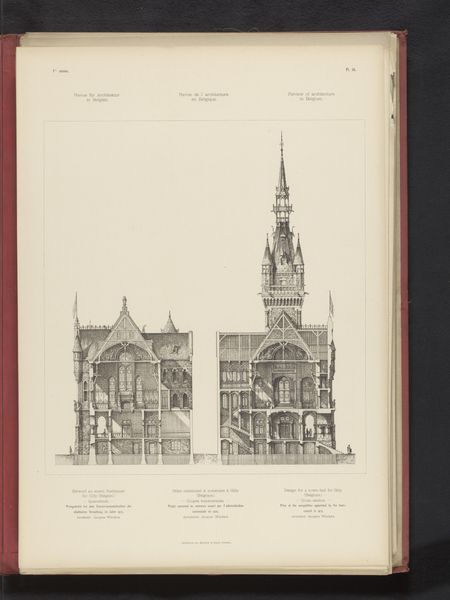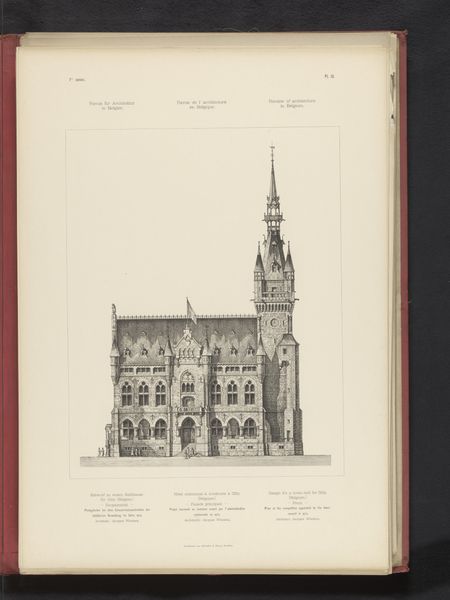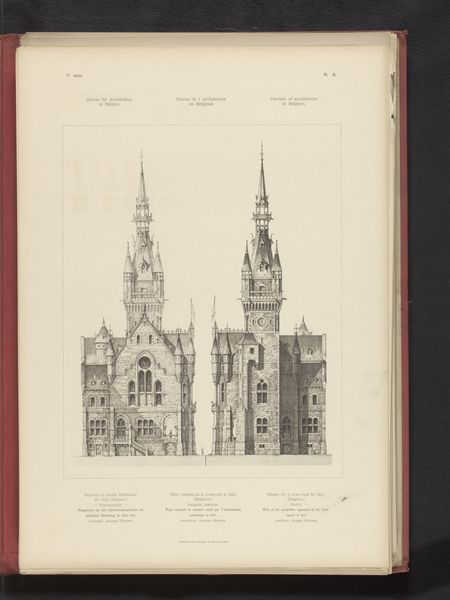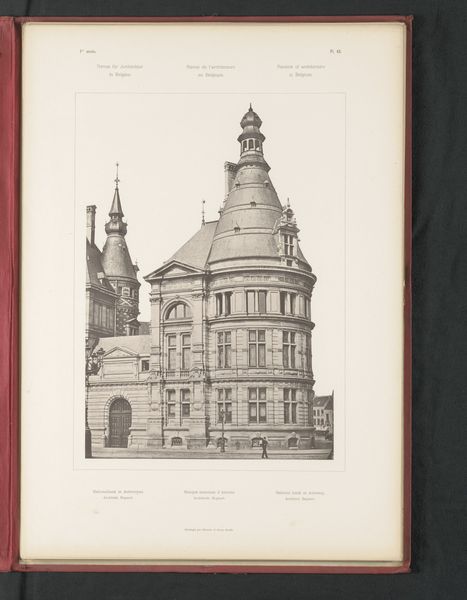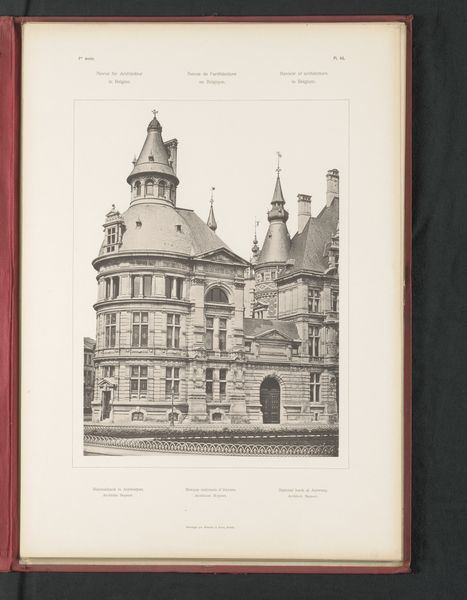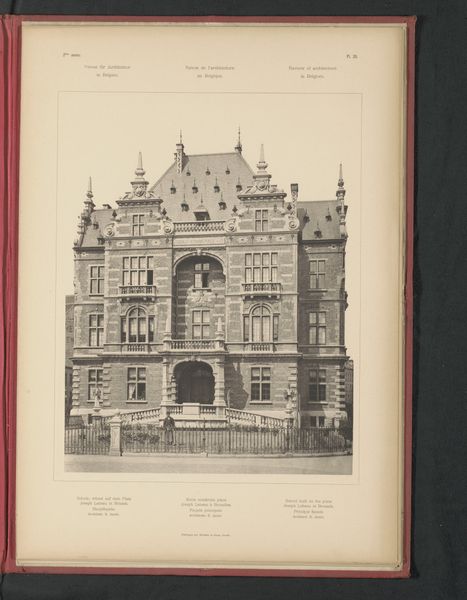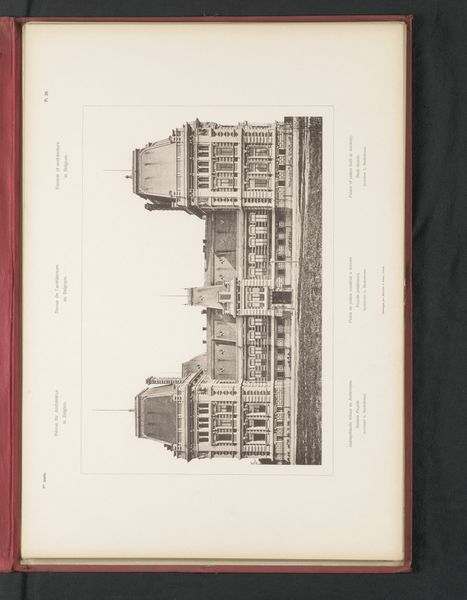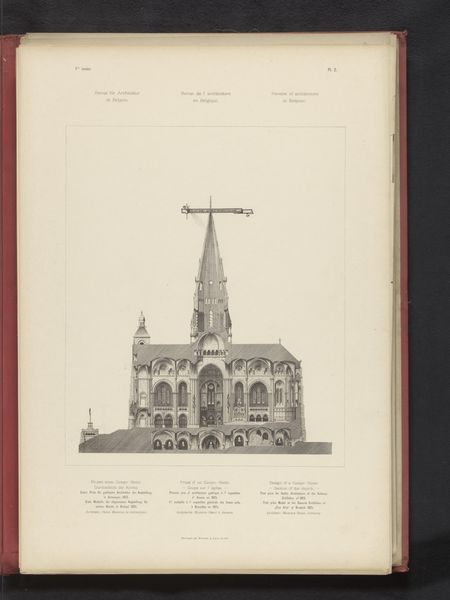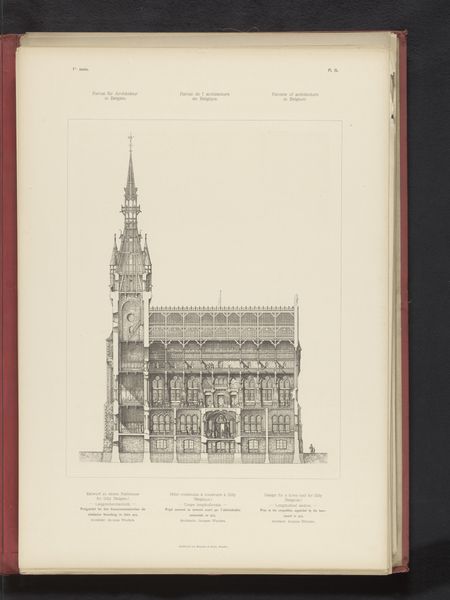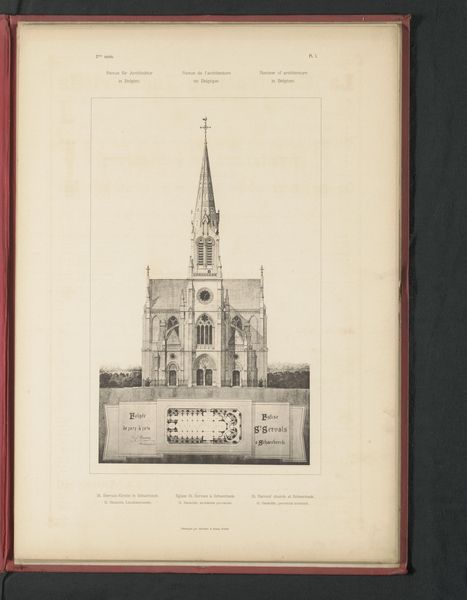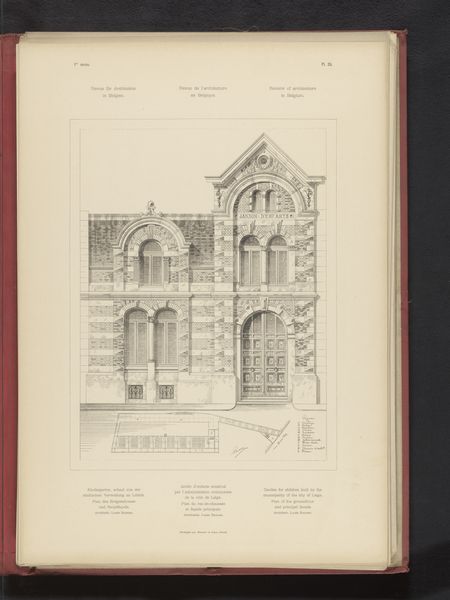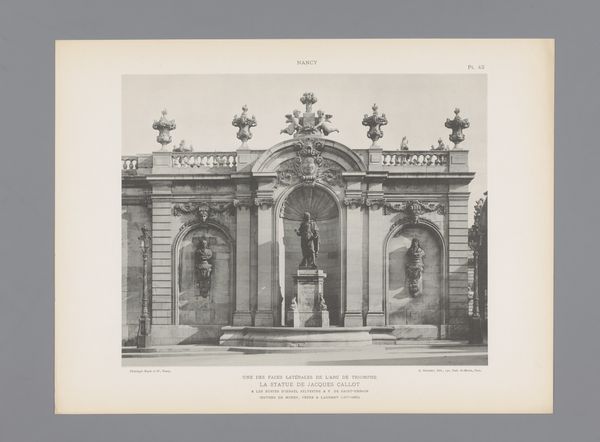
Dimensions: height 329 mm, width 263 mm
Copyright: Rijks Museum: Open Domain
Editor: So, this print from before 1893, titled "View of an Orphanage in Antwerp, Belgium," really grabs my attention. It’s so precise, almost sterile, in its depiction of the building. I wonder, what societal messages were buildings like these meant to convey back then? Curator: An excellent question! Institutions like orphanages in the late 19th century were deeply enmeshed in the social and political fabric. These weren’t just places of care; they were reflections of societal values and anxieties. We see Neoclassical architectural elements – the symmetry, the grand scale. Consider what that language projects. Editor: It definitely suggests stability and order. But also maybe... control? Was the goal just to provide shelter, or something more? Curator: Exactly! Think about who commissioned and funded these buildings. Often, it was a mix of state and religious organizations. They aimed to mold these children into 'productive' citizens. The architecture itself becomes a tool. Can you see how the building is presented almost like a fortress? Editor: I do see that! So it’s less about a warm, inviting space, and more about instilling discipline, maybe even obedience? Curator: Precisely. And that's visible not just in this building but informs social politics. How does seeing it in this context change your perception? Editor: I see that this image provides a look into social themes. Understanding that architectural style reflected societal goals has changed how I appreciate the building as more than just a pretty print. Curator: Indeed. It reminds us that art—even architectural prints—can be powerful documents of social history.
Comments
No comments
Be the first to comment and join the conversation on the ultimate creative platform.
